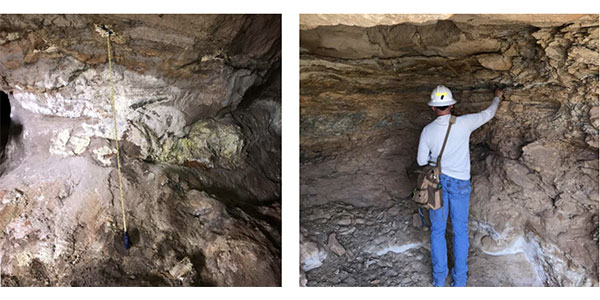GTI Resources takes peek at acquisition site, likes what it sees

Pic: Schroptschop / E+ via Getty Images
Special Report: Ahead of a planned acquisition of private US uranium and vanadium firm Voyager Energy, GTI Resources conducted a site visit — and the results were exciting.
GTI (ASX:GTR) has provided investors with an update on the progress of the acquisition of Voyager, which is scheduled to be completed next month.
A site visit as part of due diligence has revealed visible mineralisation encountered within exposed outcrops and numerous historical underground workings located within the claim groups.
Voyager offered the opportunity to select 34 new prospective claims near the ones GTI already knew about, enhancing GTI’s ground position.
The new claims are highly prospective for uranium and vanadium and increase the scale of the claim groups.
The land package expands the previous area to cover 181 claims, around 1,500 hectares, of the Henry Mountains region in Utah.

The Henry Mountains are located within Garfield County — the fourth largest producer of uranium and vanadium in Utah.
The region forms part of the prolific Colorado Plateau uranium province which has historically provided the most important uranium resources in the US.
Getting in at a good time
Right now, there are just two ASX-listed companies with uranium projects in the US, and GTI will become the third.
The company has a strategic advantage with the acquisition of Voyager Energy because the projects it has the right to acquire all host known high-grade uranium and vanadium mineralisation that could potentially be much higher grade than the average 2,400ppm uranium and 1.25 per cent vanadium produced in the region in the past.
Sampling taken from the projects returned high grades of up to 81,558ppm of uranium and 8.39 per cent vanadium.
Uranium demand is forecast to increase by 44 per cent in the next 15 years, but due to the depressed uranium market over the past decade, very few projects have entered the development pipeline leading analysts to predict a major supply shortage in the coming years.
>> Uranium stocks guide: Here’s everything you need to know
● Subscribe to our daily newsletter
● Join our small cap Facebook group
● Follow us on Facebookor Twitter
This story was developed in collaboration with GTI Resources, a Stockhead advertiser at the time of publishing.
This story does not constitute financial product advice. You should consider obtaining independent advice before making any financial decisions.
UNLOCK INSIGHTS
Discover the untold stories of emerging ASX stocks.
Daily news and expert analysis, it's free to subscribe.
By proceeding, you confirm you understand that we handle personal information in accordance with our Privacy Policy.








